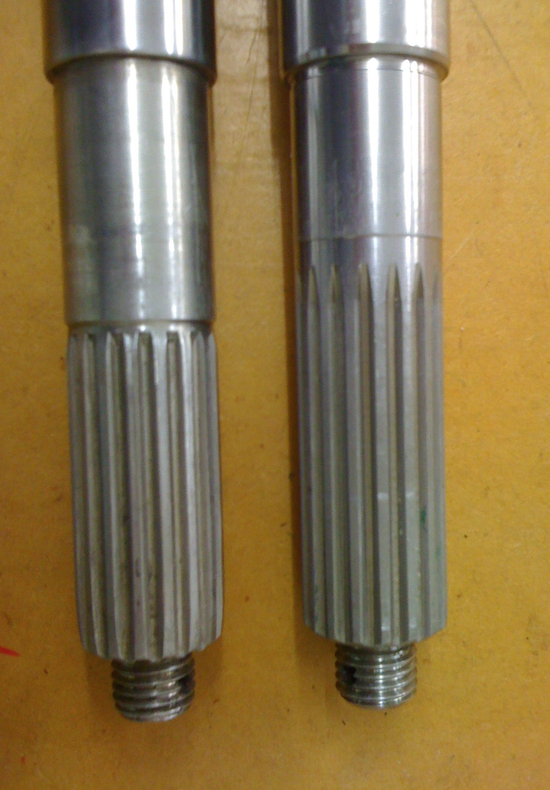Saildrive Spline Tolerances
The splines are now all cast in place during the lost wax process.
The problem we have is that each newer model spline on Saildrives is larger than
the previous long standing standard.
We cannot have splines broached to a particular model so we have to make them
so they will fit on the largest shaft with correct tolerances.
Saildrives are what is called a face centered spline - which means there should be no contact between
the smallest and largest diameters.
We have also effectively reduced the length of spline for two reasons:
- To ensure the spline is no longer than the shortest splines in existence ( Early Volvo )
- To provide a smooth cast lead in to ensure the units are easy to mount
The new Twin Disc TP60 is larger then the Nanni ZF which is in turn larger than the Lombardini
which is large than the Bukh which is larger than the Yanmar which is larger than the Volvo which is larger then the early Volvo's.
In addition the shaft at the front of the splined section keeps on getting larger.
Shortening the spline has the effect of allowing for more movement or rocker at the end of the boss,
but of course once the nut is mounted this disappears as the nut centers the boss onto the spline.
This will be the movement able to be detected by rocking the boss.
( Older Volvo splines will be the worst possible tolerances )
Broaching internally is a very slow and expensive process which varies between items and does not allow for a smooth
lead in to the teeth on the spline which is required for easy mounting.
We have had these new cast units in use for many years now without any issues.
In a perfect world the tolerances would be tighter - but also the splines from the various manufacturers would also
be to the same tolerances - which they are not and it is this we have to deal with.
All splines will " fret " when motion is reversed - this has always been the case and should be of no concern.
We have now had 4 tools cut in succession to ensure the correct tolerances on the largest
shafts - the current version is just 0.15 deeper per tooth than previous versions
and while it is tighter - it is very little but affects the tolerances because of the angle of the teeth
( this is a face centered spline which has no contact in the ID or OD ) multiples the tolerances.
We are very confident that if the unit is mounted as specified with locking screws and additional
center locking screw - the unit will be securely mounted and will perform without issue into the future.
The photo below well illustrates the problem we face with the glaring differences between an old and new Volvo spline.
One is rolled vs milled tooth form, the spline length is different and the of the leading shaft is quite different as is that
of the spline. Note the shortened and highly chamfered ends of the left most spline which leads to higher sideways movement of the boss.
Note the two machining marks or steps on the outer section of the spline on the right showing how the front and rear
sections of the tooth are quite different. We of course have to accommodate the larger leading to
higher tolerances on those splines that do not have these variances.
